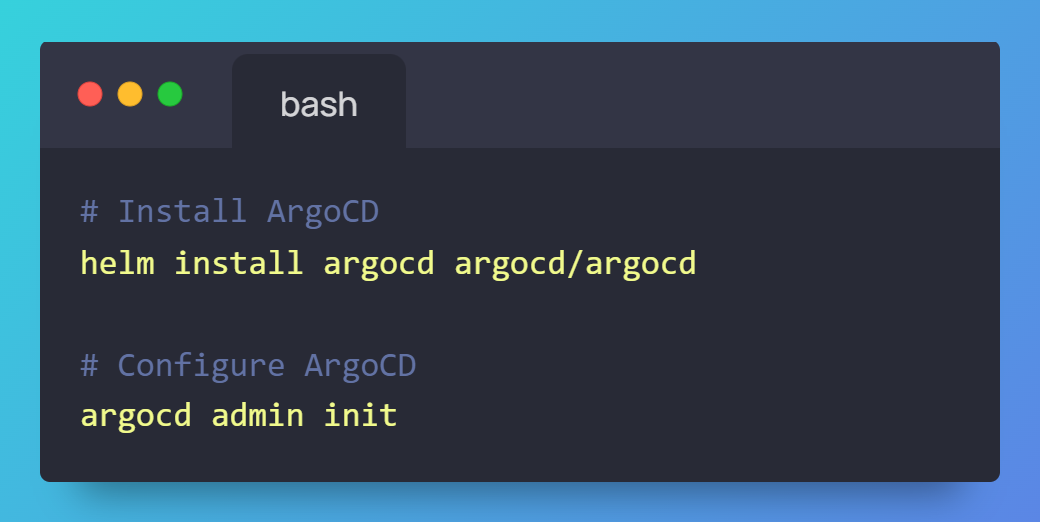GitOps: A Modern Approach to Infrastructure and Application Management.
GitOps manages infrastructure and applications using Git as the single source of truth, providing declarative configuration, automation, and version control.
In recent years, GitOps has emerged as a powerful and innovative approach to managing infrastructure and applications. By leveraging Git, a popular version control system, as the single source of truth, GitOps offers a declarative and automated way to manage infrastructure and application configurations.
This article will delve into the key concepts, benefits, and practical examples of GitOps, including code examples to illustrate its implementation.
Understanding GitOps
GitOps is a methodology that leverages Git to define and manage the desired state of infrastructure and applications. It operates on the principle of "infrastructure as code," where infrastructure configurations are treated as code and stored in Git repositories. This approach enables version control, collaboration, and automation of infrastructure and application management processes.
Key Components of GitOps
Git Repository: Serves as the central repository for storing the desired state of infrastructure and applications in the form of declarative configuration files.
CI/CD Pipeline: Automatically detects changes in the Git repository and triggers the deployment process.
GitOps Operator: A controller that reconciles the current state of the infrastructure with the desired state defined in the Git repository.
Monitoring and Alerting: Continuously monitors the deployed infrastructure and applications to ensure they are in the desired state. If deviations are detected, alerts are triggered to initiate remediation.
Benefits of GitOps
Declarative Configuration: GitOps uses declarative configuration files to define the desired state of infrastructure and applications. This eliminates the need for manual configuration and reduces the risk of errors.
Version Control: Git provides robust version control capabilities, allowing you to track changes, revert to previous states, and collaborate effectively with teams.
Automation: GitOps automates the deployment and management of infrastructure and applications, reducing manual effort and increasing efficiency.
Continuous Delivery: GitOps enables continuous delivery by automating the deployment pipeline and ensuring that changes are deployed consistently and reliably.
Security and Compliance: GitOps can be integrated with security and compliance tools to ensure that infrastructure and applications adhere to defined standards and policies.
Collaboration and Transparency: GitOps fosters collaboration among teams by providing a shared source of truth and transparent audit trails.
GitOps in Action: A Practical Example
Let's consider a simple example of using GitOps to manage a Kubernetes cluster using ArgoCD, a popular GitOps operator.
1. Create a Git repository: Create a Git repository to store the desired state of the Kubernetes cluster.
2. Define the desired state: Create YAML files that describe the desired configuration of Kubernetes resources, such as deployments, services, and ingress.
3. Set up ArgoCD: Install ArgoCD and configure it to connect to your Git repository and Kubernetes cluster.
4. Add the Git repository to ArgoCD:
5. Sync the application:
ArgoCD will reconcile the current state of the Kubernetes cluster with the desired state defined in the Git repository, creating or updating the necessary resources.
GitOps and CI/CD
GitOps can be seamlessly integrated with CI/CD pipelines to automate the entire deployment process. Here's a typical workflow:
Commit changes: Developers commit changes to the Git repository, updating the desired state of the infrastructure or application.
CI/CD pipeline triggered: The CI/CD pipeline is triggered by the Git push event.
Build and test: The pipeline builds the application, runs tests, and generates artifacts.
Update Git repository: The pipeline updates the Git repository with the new artifacts and configuration changes.
GitOps operator reconciles: The GitOps operator detects the changes in the Git repository and reconciles the current state of the infrastructure with the desired state.
Best Practices for GitOps
Use declarative configuration: Define the desired state of your infrastructure and applications using declarative configuration files.
Version control everything: Store all configuration files in a Git repository to enable version control, collaboration, and auditability.
Automate deployments: Use CI/CD pipelines and GitOps operators to automate the deployment process.
Monitor and alert: Continuously monitor the deployed infrastructure and applications to ensure they are in the desired state.
Use a GitOps operator: Choose a suitable GitOps operator like ArgoCD, Flux, or Weave Flux.
Implement security best practices: Protect your Git repository and infrastructure using appropriate security measures.
Conclusion
GitOps represents a modern and effective approach to managing infrastructure and applications. By leveraging Git as the single source of truth, GitOps enables declarative configuration, automation, version control, and collaboration.
As organizations continue to adopt cloud-native technologies and embrace DevOps practices, GitOps is likely to play an even more prominent role in the future.









